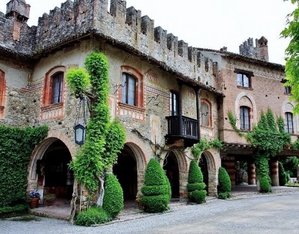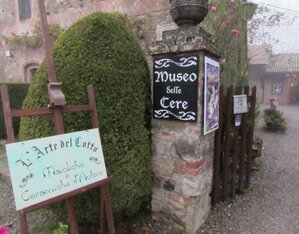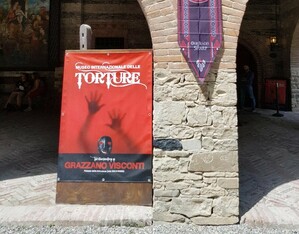The park, which includes the castle and the town of Grazzano, was conceived in the early 20th century by Duke Giuseppe Visconti di Modrone reflecting an eclectic taste, combining elements of a more formal garden with the Romantic atmospheres of English landscaping.
The castle, originally built in 1395 by Giovanni Anguissola by permission of his father-in-law Gian Galeazzo Visconti became property of the Visconti di Modrone family in 1884. Between 1910 and 1914 Duke Giuseppe, a philanthropist, entrepreneur and visionary intellectual, as well as father to film director Luchino Visconti, introduced a new landscape design into the park, although maintaining the formal structure in the areas perpendicular to the castle. Opposite the building main facade there are a fountain with the statue of Orpheus and two parterres with statues of the Four Seasons with geometrical flowerbeds and topiary hedges. At the back, from a Neo Baroque mixtilinear fish pond stretches the perspective cone of a hornbeam-lined central pathway reaching an elevated belvedere area affording a view on the surrounding countryside. Parallel to the central path are two minor ones, lined with nettle trees and sycamores. On each side of this geometrical central area lies the English style landscape park with shady paths surrounded by yews, lime trees, and poplars. Autochthonous plants, oaks, elms, black poplars, field maples, hornbeams and ashes coexist with specimen of exotic origin such as Lebanese cedars and incense cedars. A sycamore and a tilia, over 150 and 80 years old respectively are the park’s oldest specimen. At the northern end of the property there is a Gothic Revival cottage used as a play house for the Duke’s daughters and a polygonal boxwood-hedge labyrinth with two sphynxes at the entrance. Irrigation water for the park comes from the Grazzano stream, flowing south east of the property, via a 19th-century gate valve hydraulic system based on a complex network of small canals running parallel to flowerbeds, pathways and across the tree grove.




